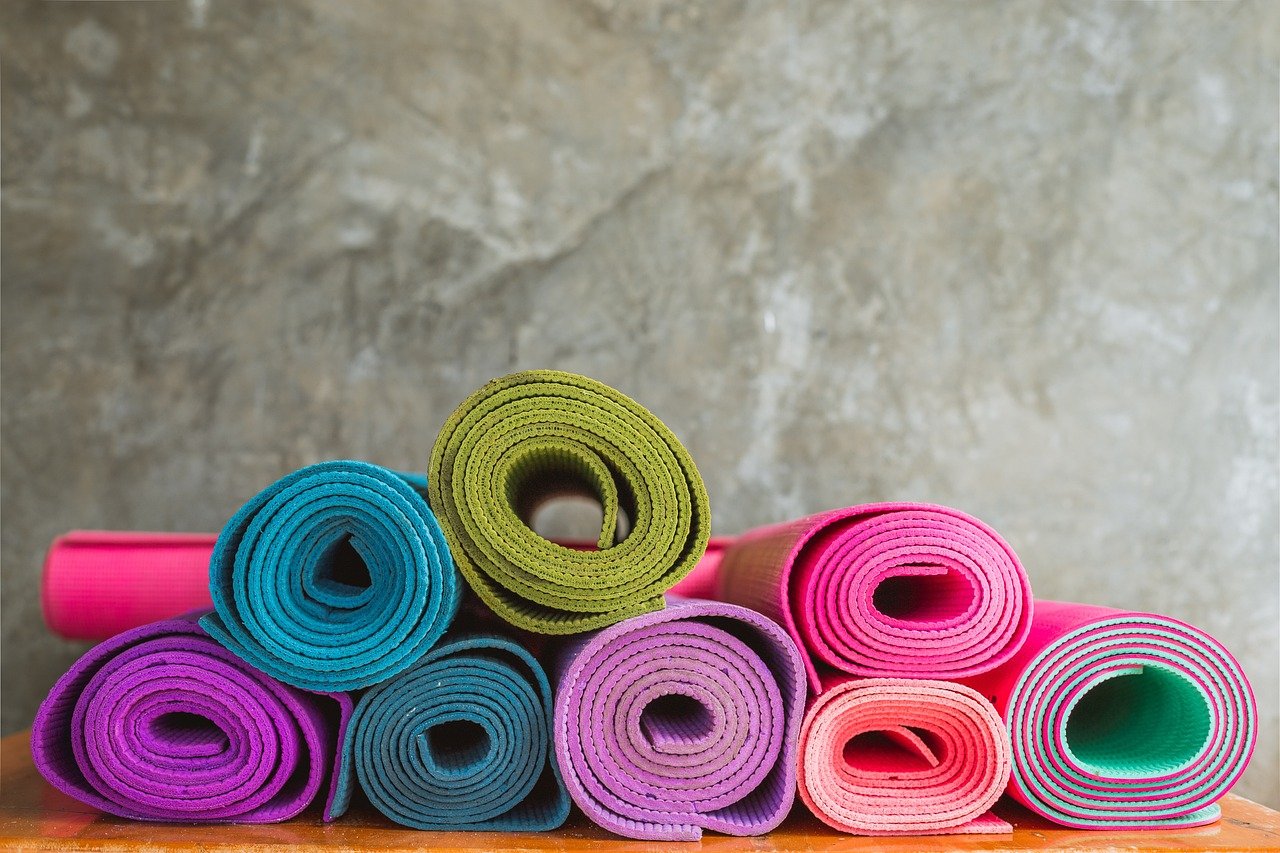The Secret Behind Yoga Mats: Unveiling the Yoga Mat Material that Make the Magic Happen
December 15, 2023 | by fitsportshub.com

Introduction:
Greetings, fellow yogis and aspiring yogis! Have you ever wondered what lies beneath your trusty yoga mat? What materials are responsible for providing you with the perfect balance, grip, and comfort during your practice? Today, we’re going to unravel the mystery and dive into the world of yoga mat materials.
1. Natural Rubber:
One of the most popular materials used in yoga mats is natural rubber. Derived from the sap of rubber trees, this eco-friendly material offers excellent grip and cushioning. Its natural elasticity ensures that your mat retains its shape and doesn’t slide around during those intense poses. If you’re looking for a high-quality natural rubber yoga mat, check out the Natural Bliss Yoga Mat on Amazon.
2. PVC (Polyvinyl Chloride):
PVC, also known as vinyl, is a synthetic material commonly used in yoga mats. It provides durability, affordability, and easy maintenance. However, it’s important to note that PVC is not the most environmentally friendly option due to its non-biodegradable nature. If you’re in the market for a PVC yoga mat, consider the Eco-Friendly PVC-Free Yoga Mat available on Amazon. It offers the benefits of PVC without harming the planet.
3. TPE (Thermoplastic Elastomer):
TPE is a newer material gaining popularity in the yoga world. It’s a blend of rubber and plastic, offering the best of both worlds. TPE yoga mats are lightweight, eco-friendly, and provide excellent cushioning. If you’re interested in trying out a TPE mat, check out the Eco-Friendly TPE Yoga Mat on Amazon.
4. Cork:
Yes, you read that right! Cork, the same material used in wine stoppers, is also used in yoga mats. These mats are known for their natural antimicrobial properties, making them a hygienic choice for your practice. They provide a firm and stable surface, perfect for maintaining balance. If you’re curious about cork yoga mats, take a look at the Cork Harmony Yoga Mat available on Amazon.
5. Jute:
Jute is another natural material that has found its way into the yoga mat world. It’s a plant-based fiber that offers excellent grip and traction, even during sweaty sessions. Jute mats are also biodegradable and eco-friendly. If you’re interested in exploring jute yoga mats, consider the Eco-Friendly Jute Yoga Mat on Amazon.
Conclusion:
Now that you’re familiar with the various materials used in yoga mats, you can make an informed decision when choosing your next mat. Whether you prefer the grip of natural rubber, the durability of PVC, the eco-friendliness of TPE, the antimicrobial properties of cork, or the traction of jute, there’s a mat out there that suits your needs.
Remember, your yoga mat is more than just a prop; it’s your sanctuary, your space for self-discovery and growth. So, invest in a mat that resonates with you, supports your practice, and brings you joy.
Happy yoga-ing!
RELATED POSTS
View all




